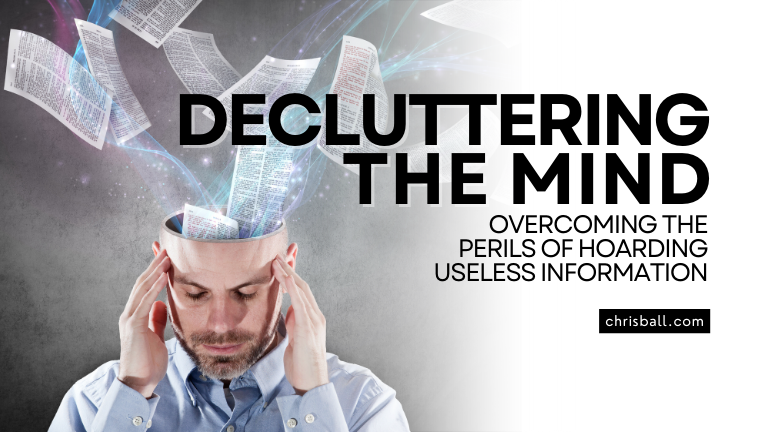In the quest for productivity, one major hurdle I faced early in my career was the accumulation of unnecessary information. This habit manifested as a cluttered workspace overflowing with old letters, emails, and promotional materials—creating an inefficient and chaotic work environment.
The consequences of hoarding irrelevant data extend beyond physical mess; they congest the mental workspace as well. For instance, during a visit to a company where every email was printed and filed indiscriminately, I witnessed firsthand the inefficiencies this created. Their office resembled a labyrinth of papers, where crucial information was buried under mounds of irrelevance, making it arduous to locate anything quickly.
While certain professions like insurance and banking necessitate the retention of specific documents, indiscriminately keeping everything makes finding vital data like searching for a needle in a haystack. It’s a practice that not only slows down productivity but also magnifies stress and disorganisation.
To counteract this, I adopted a strategic approach to information management, learning to categorise, prioritise, and discard information systematically:
- Categorise: I began by sorting information based on its importance and relevance. This step helped in distinguishing what was necessary immediately, what might be needed in the future, and what was no longer relevant.
- Prioritise: Focusing on essential and time-sensitive information ensured that I tackled the most critical tasks first, streamlining my workflow and improving efficiency.
- Discard: Regularly discarding outdated or irrelevant information became a crucial practice, helping to maintain a lean and manageable information pool.
- Organise: Systematically organising the retained information made it easily accessible, critical for quick retrieval and efficient use of resources.
The transformation brought about by efficiently managing information extended far beyond mere task management; it was about refining every aspect of business operations. By eliminating unnecessary data, I cleared valuable mental and physical space, allowing for a more streamlined and focused approach to work.
This process is about more than just decluttering—it’s about cultivating a mindset where every piece of information is purposefully retained. Recognising that efficiency often comes from focusing on what is truly essential, we pave the way toward our goals, unburdened by the unnecessary weight of redundant data.
In my professional life, the habit of hoarding useless information came from a fear that I might need the information and that some critical problem would arise because I had disposed of it. This mentality created a stifling and disordered work environment, burdened with the weight of redundant information.
To overcome this challenge, I had to shift my perspective and embrace the notion that less is often more. By letting go of redundant data, I began to clear the mental and physical space needed for a more focused, efficient, and stress-free work environment.
This transformation was crucial in regaining control over my work life and achieving a sense of peace and clarity that had been missing. By treating each piece of information as a strategic asset or liability, assessing its value, and organising it efficiently, I significantly enhanced my productivity and effectiveness.
Navigating the common pitfalls that hinder productivity, such as hoarding useless information, is possible with the right strategies and mindset. By adopting a disciplined approach to information management, you can transform these obstacles into stepping stones for success, paving a clearer path toward achieving your goals in both your personal and professional life.
